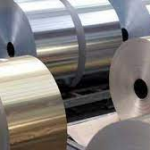 Some $1.5 trillion of investment is needed to decarbonise the electricity supplies used to produce aluminium so that the industry can begin to meet the UN climate targets.
Some $1.5 trillion of investment is needed to decarbonise the electricity supplies used to produce aluminium so that the industry can begin to meet the UN climate targets.
But this huge investment is only part of the funds needed for aluminium production, one of the most energy intensive metals, to cut emissions by 2050.
About 60% of the aluminium sector’s emissions come from the electricity consumed in the smelting process, but investments are also needed to switch to green hydrogen, implement carbon reduction and increase recycling.
The aluminium sector is expected to reduce greenhouse gas emissions by 95% by 2050, from 1.1 billion tonnes to 53 million tonnes, to help limit the rise in global temperatures to 1.5 degrees Celsius above pre-industrial levels.
The carbon intensity of primary aluminium is expected to fall below 1 tonne of CO2 per tonne of metal by 2050 from 16.1 tonnes today. Primary aluminium production would increase only modestly by 4 million tonnes to 68 million tonnes by 2050, but recycled production would more than double to 81 million tonnes from 32 million tonnes.
.gif) Loading
Loading

